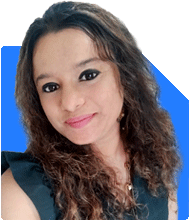Retirement at 45 with 2 lakh pension: How can I achieve it?
Ramalingam Kalirajan |10874 Answers |Ask -Follow
Mutual Funds, Financial Planning Expert - Answered on Jul 25, 2024
He has an MBA in finance from the University of Madras and is a certified financial planner.
He is the director and chief financial planner at Holistic Investment, a Chennai-based firm that offers financial planning and wealth management advice.... more

Iam a software engg. Iam 29 year old. My yearly package is 27 lac. I have invested about 40 lac in my 2bhk flat and it's furnishing my home loan emi is 76735 pm for next 33 months. I have 5 lacs in ppf, 3 lacs in epf, 2 lacs in nps and 7 lacs in gold. Please guide me to make 2 lacs. As pension when I retire at 45 age
You are a 29-year-old software engineer with an annual salary of Rs. 27 lakhs. Here is a summary of your current investments and liabilities:
Home: 2BHK flat with furnishings worth Rs. 40 lakhs
Home Loan EMI: Rs. 76,735 per month for the next 33 months
PPF: Rs. 5 lakhs
EPF: Rs. 3 lakhs
NPS: Rs. 2 lakhs
Gold: Rs. 7 lakhs
You aim to have a pension of Rs. 2 lakhs per month by age 45. Let's develop a plan to achieve this.
Assessing Current Investments
Your current investments provide a strong foundation. The home loan will be paid off in about 3 years, freeing up significant monthly cash flow. This allows you to redirect funds to other investments.
Increasing Monthly Savings
After your home loan is paid off, you will have an additional Rs. 76,735 per month. Redirect these savings towards mutual funds, NPS, and other investment options.
Mutual Funds for Growth
Investing in actively managed mutual funds can provide higher returns. They offer diversification and professional management. Avoid direct funds as they lack advisory support. Use regular funds through a Certified Financial Planner (CFP).
National Pension System (NPS)
Increase your contributions to the NPS. NPS provides tax benefits and a regular pension post-retirement. Aim to maximise your contributions annually.
Public Provident Fund (PPF)
Continue investing in PPF for tax-free returns. It is a secure and long-term investment option. It will provide a lump sum at maturity.
Gold as a Safe Haven
Gold is a good hedge against inflation. Continue holding it as part of your portfolio. Consider adding more periodically.
Diversifying Investments
Diversify your investments across different asset classes. This reduces risk and provides balanced growth. Here’s a suggested allocation:
Equity Mutual Funds: For high growth potential.
Debt Mutual Funds: For stability and regular income.
PPF and EPF: For long-term and tax-free returns.
NPS: For a regular pension.
Gold: For safety and inflation hedge.
Calculating Future Needs
You need Rs. 2 lakhs per month by age 45. This amounts to Rs. 24 lakhs annually. Adjusting for inflation, this figure will be higher. Plan to build a corpus that can generate this amount.
Based on current trends, you may need a corpus of Rs. 5-6 crores. This assumes a conservative return rate post-retirement.
Investment Strategy
To achieve this corpus, focus on the following steps:
Maximise Savings: Increase your savings rate as your income grows.
Regular Investments: Invest systematically in mutual funds and NPS.
Review Portfolio: Regularly review and rebalance your portfolio with a CFP.
Insurance and Risk Management
Ensure you have adequate life and health insurance. This protects your investments and provides security for your family.
Consult a Certified Financial Planner
A CFP can provide personalised advice. They help optimise your investment strategy and ensure you meet your retirement goals.
Final Insights
You have a solid financial base with diversified investments. Focus on increasing savings, especially after your home loan is paid off. Invest in mutual funds, NPS, and other secure options. Regularly review your portfolio with a CFP.
By following this plan, you can achieve a comfortable pension of Rs. 2 lakhs per month by age 45.
Best Regards,
K. Ramalingam, MBA, CFP
Chief Financial Planner,
www.holisticinvestment.in
You may like to see similar questions and answers below
Jinal Mehta | Answer |Ask -Follow
Financial Planner - Answered on Feb 10, 2024
Ramalingam Kalirajan |10874 Answers |Ask -Follow
Mutual Funds, Financial Planning Expert - Answered on Oct 07, 2024
Milind Vadjikar | Answer |Ask -Follow
Insurance, Stocks, MF, PF Expert - Answered on Oct 14, 2024
Ramalingam Kalirajan |10874 Answers |Ask -Follow
Mutual Funds, Financial Planning Expert - Answered on Jun 21, 2025
Naveenn Kummar |233 Answers |Ask -Follow
Financial Planner, MF, Insurance Expert - Answered on Sep 04, 2025
Mayank Chandel |2569 Answers |Ask -Follow
IIT-JEE, NEET-UG, SAT, CLAT, CA, CS Exam Expert - Answered on Dec 08, 2025
Mayank Chandel |2569 Answers |Ask -Follow
IIT-JEE, NEET-UG, SAT, CLAT, CA, CS Exam Expert - Answered on Dec 08, 2025

Mayank Chandel |2569 Answers |Ask -Follow
IIT-JEE, NEET-UG, SAT, CLAT, CA, CS Exam Expert - Answered on Dec 08, 2025
Mayank Chandel |2569 Answers |Ask -Follow
IIT-JEE, NEET-UG, SAT, CLAT, CA, CS Exam Expert - Answered on Dec 08, 2025
Mayank Chandel |2569 Answers |Ask -Follow
IIT-JEE, NEET-UG, SAT, CLAT, CA, CS Exam Expert - Answered on Dec 08, 2025
Anu Krishna |1746 Answers |Ask -Follow
Relationships Expert, Mind Coach - Answered on Dec 08, 2025
Ramalingam Kalirajan |10874 Answers |Ask -Follow
Mutual Funds, Financial Planning Expert - Answered on Dec 08, 2025
Samraat Jadhav |2499 Answers |Ask -Follow
Stock Market Expert - Answered on Dec 08, 2025
Ramalingam Kalirajan |10874 Answers |Ask -Follow
Mutual Funds, Financial Planning Expert - Answered on Dec 08, 2025
Radheshyam Zanwar |6737 Answers |Ask -Follow
MHT-CET, IIT-JEE, NEET-UG Expert - Answered on Dec 08, 2025

























